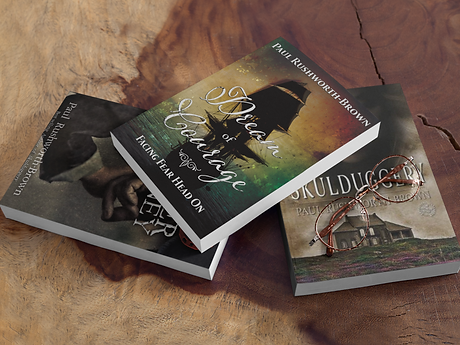
Ancient Birth Control Methods: The earliest forms of birth control, as well as abortion, were found in Ancient Egypt and Mesopotamia in ancient times. Papyrus scrolls were found to contain directions on how to make birth control, using honey, acacia leaves, and lint as a form of cervical cap to prevent sperm from entering the womb. Extended breastfeeding for up to three years was also used as a form of birth control in Ancient Egypt. Perhaps one of the most famous ancient forms of birth control was the silphium plant, native to North Africa. This plant was used as a contraceptive and was incredibly popular in ancient Greece and Rome.

Using probably the least hygienic ingredient used to prevent pregnancy, ancient Egyptians and Mesopotamians would mix crocodile dung with sour milk to form a paste, the dungy dough was inserted into the vagina with the hope it would create an acidic barrier to sperm. This isn’t the only record of animal faeces being used as ancient contraceptives. In ancient India and the Middle East, people tried elephant faeces in a similar way to prevent pregnancy.
In the past, people assumed the citric acid in lemon possessed spermicidal qualities, making this fruit an effective form of ancient birth control. Women would soak sponges or cotton in lemon juice and insert them into their vaginas. It would both act as a barrier to the cervix and as a spermicide. Rumour has it that Casanova, the famous Venetian ladies’ man of the 18th century, would fashion a cervical cap out of half a lemon to use with his sex partners.

Women in classical antiquity, the Middle Ages, and the Early Modern period used herbs to control fertility. Most women in the Middle Ages knew that certain herbs and herbal products could be taken to induce an abortion in the early stages of pregnancy and that this knowledge was primarily shared and passed down from mother to daughter..
Other methods at the time included wearing charms or placing castor seeds in the afterbirth. Some believed that performing the sexual act in certain positions would reduce their chances of pregnancy-one suggestion was that women hop and jump around or urinate afterwards.
Barrier methods, mainly condoms, have been around since at least the Renaissance. However, they were primarily used to prevent STIs, not pregnancy. Their invention was necessitated by outbreaks of syphilis across western Europe. Condoms were not used for pregnancy prevention until the early 1600s.
In the 1500s, people started soaking the sheaths in a chemical—a sort of spermicide—to protect against syphilis, and later in the 1700s, custom condoms were being produced in London, and the legendary lover Casanova (among others) used them to prevent more illegitimate children.
Interestingly, bloodletting from the foot also served as a ‘remedy for blocked menstrual periods’ in the seventeenth century and could simultaneously be understood as a means of inducing abortion.
In medieval western Europe, any efforts to halt or prevent pregnancy were deemed immoral by the Catholic Church. Women of the time still used several birth controls such as coitus interruptus, inserting lily root and rue into the vagina, and infanticide after birth.

The prize for the weirdest way to ward off pregnancy goes to the European Middle Ages when wearing weasel testicles was the go-to birth control method of choice. The Trotula, a 12th century female medical guide, advised women to cut off the animals’ testicles while they were alive, wrap them in goose skin and wear them as amulets if they didn’t want to get pregnant. Thankfully, these methods are consigned to history.
Disclaimer: The views expressed in this article intend to inform and induce conversation. They are the views of the author and are for informational purposes only. This article is not, nor is it intended to be, a substitute for professional medical advice, diagnosis or treatment, and should never be relied upon for specific medical advice.
Paul Rushworth-Brown is the author of three novels:
Skulduggery- The bleak Pennine moors of Yorkshire; a beautiful, harsh place, close to the sky, rugged and rough, no boundaries except the horizon, which in places, went on forever. Green pastures and wayward hills, the colours of ochre, brown and pink in the Spring. Green squares divided the land on one side of the lane, and on the other; sheep with thick wool and dark snouts dotted the hills and dales. The story, set on the Moors of West Yorkshire, follows wee Thomas and his family shortly after losing his father to consumption. Times were tough in 1603 and there were shenanigans and skulduggery committed by locals and outsiders alike. Queen Bess has died, and King James sits on the throne of England and Scotland. Thomas Rushworth is now the man of the house being the older of two boys. He is set to wed Agnes in an arranged marriage, but a true love story develops between them.
"Skulduggery, a different treat for lovers of historical fiction, an exciting and mysterious romp through the moors of 17th century Yorkshire, more specifically Haworth and Keighley. The story is a well-painted image of how 'copyholders' or peasants would have lived at this time but that is only the backdrop to a suspenseful whodunit with romantic tones. Modern writers usually don't know what it was like to live in the past but Rushworth-Brown has done this with great skill in this accomplished, atmospheric and thoughtful novel."
Submitted 2 months ago
By Jen From Sydney
Red Winter Journey - Come on this historic journey, which twists, turns and surprises until the very end. If you like history, adventure and intrigue with a dash of spirited love, then you will be engrossed by this tale of a peasant family unexpectedly getting caught up in the ravages of the English Civil War in 1642.
Reviewed in Australia on 17 October 2022
Paul Rushworth-Brown’s Red Winter Journey is the story of a family surviving in the time of the English Civil War; however, the story goes much deeper than that and focuses on the love of a father for his son and his plight to rescue him. I usually do not like tales of war, but Rushworth-Brown has captured the essence of humanity with love, romance, fear and mystery in this engaging family saga. The twists and turns really threw me and, the ending? Mmmmm interesting.
Dream of Courage-
The much anticipated story of the Rushworth family and their journey out of poverty takes place against the backdrop of a tumultuous period in English history. The execution of King Charles and the establishment of a Republic under the leadership of Oliver Cromwell set the stage for a time of great uncertainty and change. As the Rushworth family navigates their way through these turbulent times, they find themselves caught up in a world filled with intrigue and danger. Amidst the political upheaval, a cast of colorful characters emerges to tell the tale. Highwaymen roam the countryside, preying on unsuspecting travelers and adding an element of danger to the story. Thief-takers, tasked with tracking down criminals, operate in the shadows, their motives and allegiances often unclear. Pirates ply their trade on the high seas, their exploits adding a sense of adventure to the narrative. And wool broggers, dealing in the valuable commodity of wool, provide a glimpse into the economic underpinnings of the era. As the Rushworth family grapples with their own struggles and aspirations, they must also contend with the larger forces at play in this mysterious and bone-chilling historical thriller. The stakes are high, the risks are great, and the outcome is far from certain. Will they be able to rise above their circumstances and forge a new path for themselves in this ever-changing world? Only time will tell in this gripping tale of intrigue and suspense.





.png)

.png)

.png)
.png)



.png)








Informative medical advice, thank you. Will look over again for tonight...